BIGH Brussels Aquaponic Farm takes part in PHOTONFOOD, working on monitoring solutions for food producers in aquaponics. The joint research aims to develop reliable, affordable and easy-to-use devices that could help in the early detection of fungi and mycotoxins in the food production aquaponic system. This would allow small and local producers to run more tests for mycotoxins in the initial stages of their value chain, which would enhance their preventive capacity.
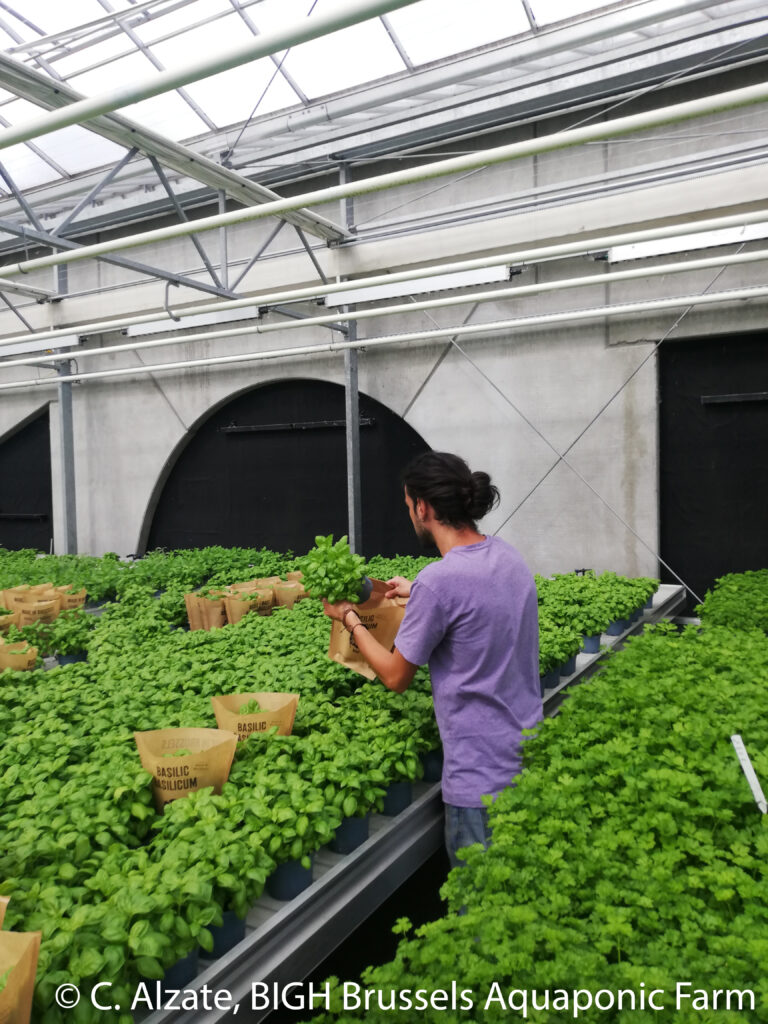
Aromatic herbs production site. Herbs greenhouse, BIGH Brussels Aquaponic Farm, Anderlecht, Brussels Capital Region.
For a company like BIGH Farm, getting to know the potential risks for its herbs is of high importance. As a pioneer company in the urban aquaponic field, there is little information available. Likewise, with current techniques, the detection of the fungi and mycotoxins takes place in advanced stages, when its effects are already visible on the plants. Therefore, belated knowledge of the presence of these microorganisms poses a risk to the healthy functioning of the greenhouse ecosystem and generates economic losses for the company.
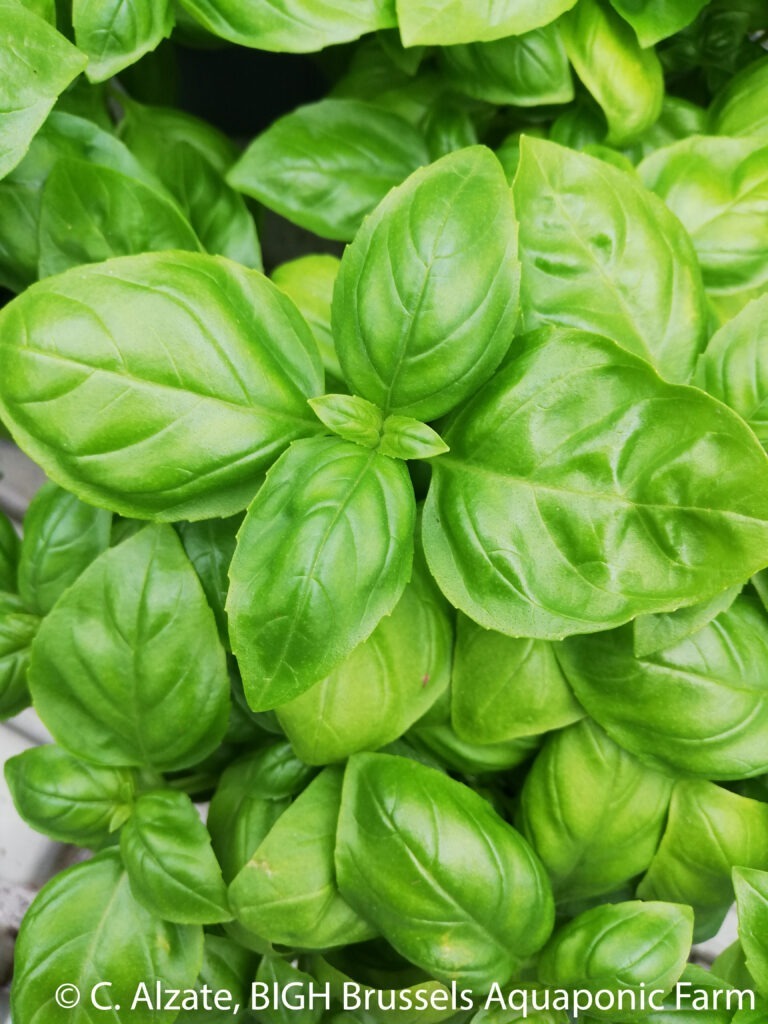
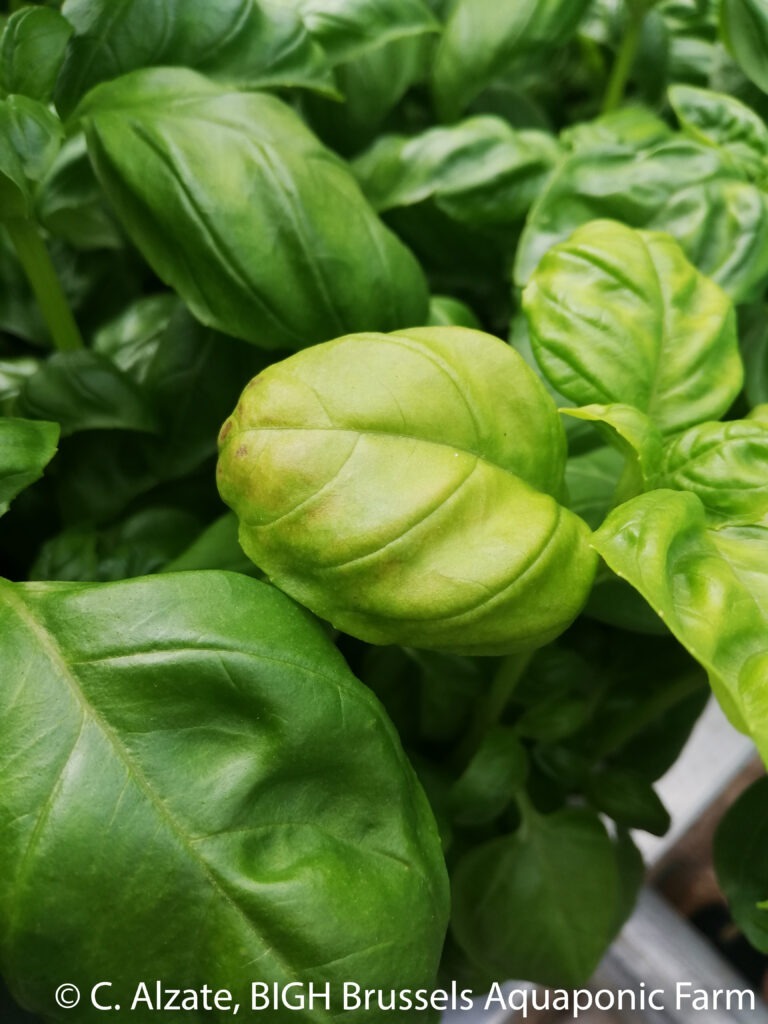
Comparing a healthy basil leaf (left) and an infected one (right).
In the framework of PHOTONFOOD, in-depth analysis will be carried out by the academic partners of the project with input information from the companies collaborating with the European initiative. For the aquaponic related research, the first sampling was conducted in June 2021 at BIGH Farm’s site in Brussels. This experimental sampling is being analysed by The University of Natural Resources and Applied Life Sciences (BOKU), Austria, and the Norwegian University of Life Sciences (NMBU), Norway, at the moment. The expected outcome is to determine what mycotoxins might be present in the system or the factors that could enhance their presence and development. Samples were taken from diverse sources, which correspond to several different stages of the Farm’s circular value chain. They included herbs’ leaves, soil, water, fish feed, and greenhouse air.
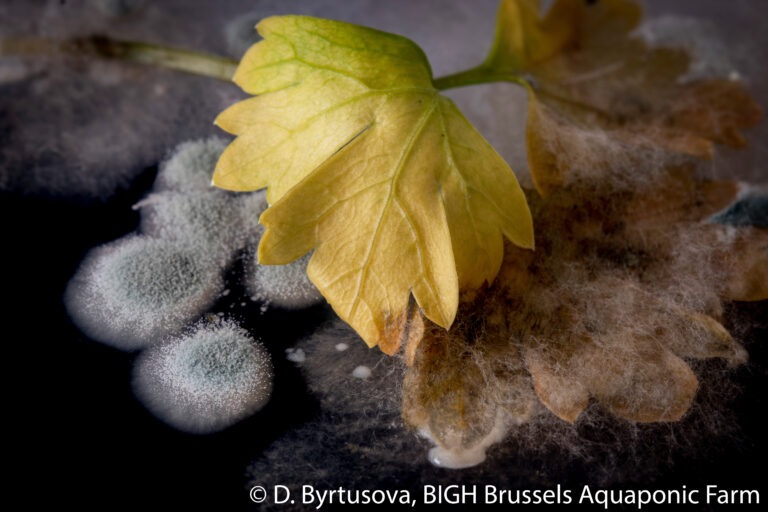
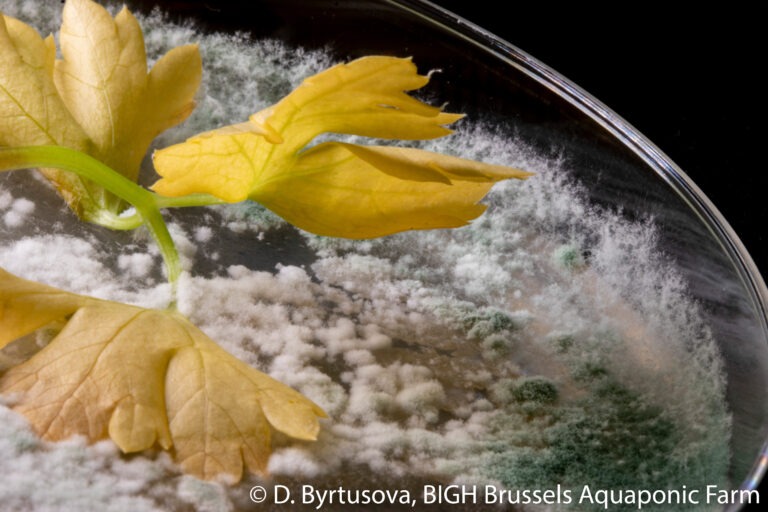
Sample of flat parsley leaves during the analysis in the laboratory.
It is essential for BIGH to run tests for external contaminants in all the water inputs, such as pisciculture water; the rainwater and the drill water; as well as the rest of the chain. As an Urban Aquaponic Farm, which joins forces between the fish production in tanks (aquaculture) and the cultivation of plants in water (hydroponics), an early detection of the presence of fungi or the discovery of potential enhancing factors for the development of mycotoxins would increase the effectiveness in preventing risks for the aromatic herbs.
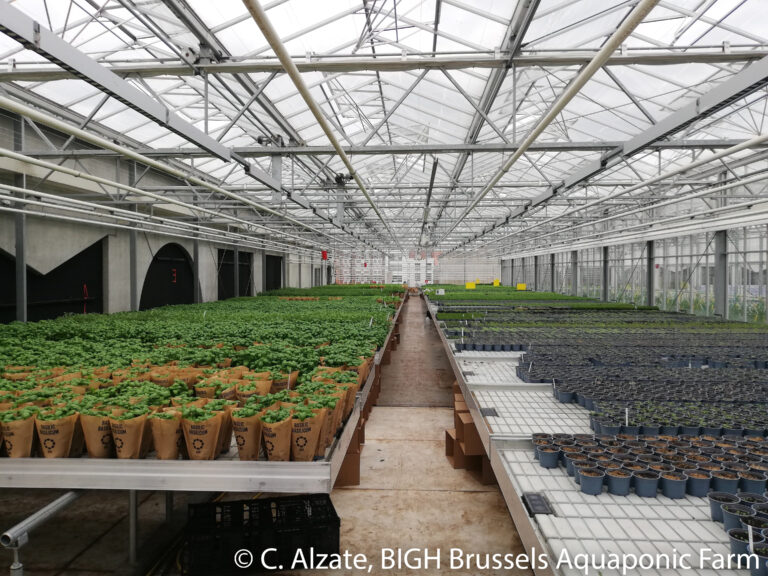
Herb Greenhouse at BIGH Brussels Aquaponic Farm, Anderlecht, Brussels Capital Region.
All the samples taken are currently under analysis in the partner universities. Further studies are being planned to complement the research. With the results, preventive measures can be developed in order to prevent potential dangers for the farm’s aromatic herbs.
About BIGH Brussels Aquaponic Farm
Brussels Aquaponic Farm is located in the centre of Brussels on the roof of a local market. The farm was built in 2017 and production started the following year. This aquaponic farm, which combines hydroponics and aquaculture, is the biggest urban rooftop farm in Europe, with a total area of 4000 m². The farm produces rainbow trout, aromatic herbs, and vegetables through two closed-loop recirculating systems where fish and plants are linked by a biological filter.
BIGH Marketing and Communication, Anderlecht, Belgium